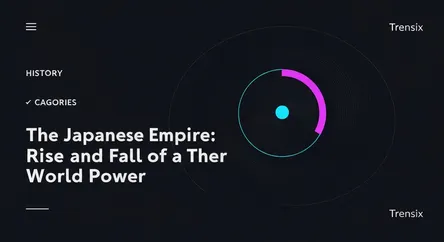History
The Japanese Empire: Rise and Fall of a World Power

An overview of the Empire of Japan (1868-1947), from its rapid modernization and expansion to its ultimate defeat in World War II and lasting legacy.
What is it?
The Empire of Japan was a historical nation-state that existed from the Meiji Restoration on January 3, 1868, until the enactment of a new constitution on May 3, 1947. This era marked a dramatic departure from its previous isolationist feudal society under the Tokugawa shogunate. Spurred by the slogan "Enrich the Country, Strengthen the Armed Forces," Japan underwent rapid industrialization and militarization. At its peak during World War II, the empire's territory included the Japanese archipelago, Korea, Taiwan, and large parts of China and Southeast Asia. The ruling emperors during this period were Meiji, Taishō, and Shōwa (Hirohito).
Why is it trending?
The Japanese Empire remains a significant historical topic due to its rapid emergence as the first non-Western great power. In a few decades, it transformed from a feudal society into an industrial powerhouse capable of defeating major European powers, such as in the Russo-Japanese War (1904-1905). Its aggressive expansionism, establishment of the "Greater East Asia Co-Prosperity Sphere," and central role as an Axis power in World War II are crucial to understanding 20th-century global history. The empire's eventual collapse, culminating in the atomic bombings of Hiroshima and Nagasaki, and its complex postwar legacy continue to fuel debate and study.
How does it affect people?
The legacy of the Japanese Empire has a profound and lasting impact. For many in East and Southeast Asia, it is remembered for brutal military occupation and colonial rule. Historical grievances, stemming from war crimes and the exploitation of resources, continue to strain Japan's diplomatic relations with its neighbors, notably China and South Korea. Domestically, the fall of the empire led to a radical transformation of Japanese society, including the adoption of a pacifist constitution and the emperor renouncing divine status to become a state symbol. This created a dual identity—a peaceful democracy grappling with an imperialist past—that continues to influence Japanese politics and national identity today.